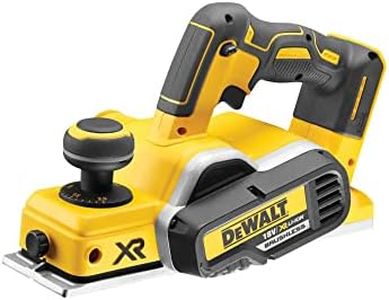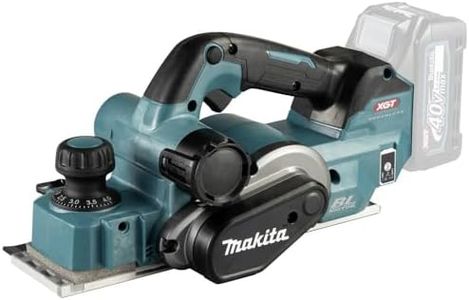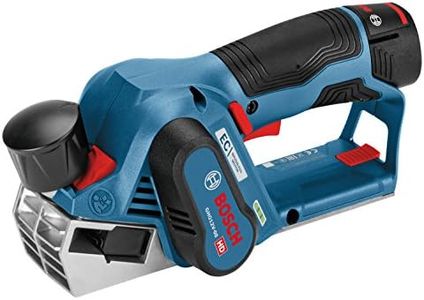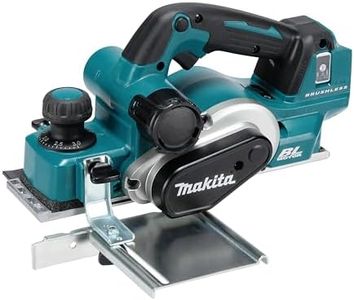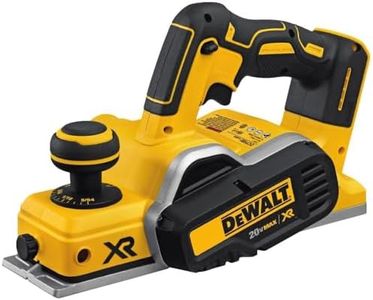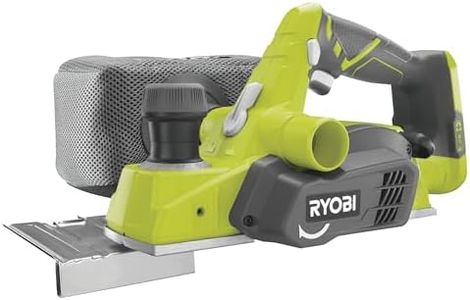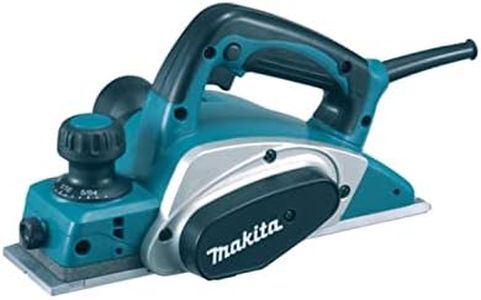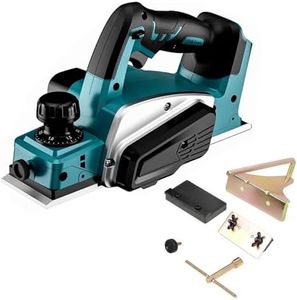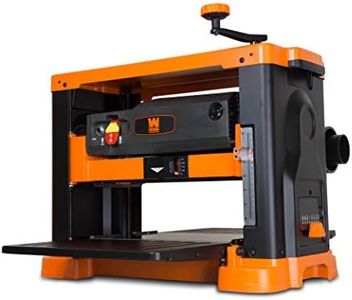We Use CookiesWe use cookies to enhance the security, performance,
functionality and for analytical and promotional activities. By continuing to browse this site you
are agreeing to our privacy policy
10 Best Planer Thicknesser
From leading brands and best sellers available on the web.Buying Guide for the Best Planer Thicknesser
Choosing a planer-thicknesser is all about matching the machine's capabilities to the type of woodworking projects you want to do. This tool is essential for preparing wood surfaces, letting you create flat, smooth boards of consistent thickness. When selecting the right planer-thicknesser, it's important to consider your workspace, the size and type of wood you typically work with, and how often you'll use the tool, so that you get a machine that is both practical and efficient for your needs.Cutterhead WidthThe cutterhead width tells you the widest board the machine can handle in one pass. This is important because if your machine is too small, you’ll have to trim down larger boards, which adds work. Models can be divided into small (around 150–200mm), medium (200–300mm), and large (over 300mm), with each step up accommodating wider boards. Woodworkers handling large furniture parts or live-edge slabs, for instance, need wider cutterheads, while those making smaller items can stick with a more compact option.
Maximum Thickness CapacityThis is the thickest piece of wood the planer-thicknesser can process. If your projects involve chunky beams or thick slabs, you’ll need a higher thickness capacity. Models are usually split into light-duty (up to about 120mm), general-purpose (120–200mm), and heavy-duty (200mm and above). Consider the maximum thickness you anticipate using to avoid being limited by your machine.
Feed RateFeed rate is how quickly the wood moves through the machine. It affects both productivity and finish quality. Slower feed rates tend to give smoother finishes, ideal for fine woodworking, while higher speeds increase throughput, which suits production work. Some machines offer variable feed rates for flexibility. Assess your need for speed versus surface finish to pick the right balance.
Motor PowerMotor power determines how easily the machine can process tough or wide boards and maintain a smooth feed without bogging down. Entry-level models might have less than 1.5kW, good for lighter tasks, while more demanding work or harder woods will need more powerful motors, typically upwards of 2kW. Match the motor power to your intended work: frequent heavy-duty planing needs more muscle.
Bed LengthThe length of the infeed and outfeed beds affects how well the machine supports long boards and helps keep everything flat and stable during planing. Short beds may let boards dip or rock, affecting accuracy. Short beds are fine for small parts, but anyone regularly working with longer boards, such as for furniture or shelving, should look for models with longer beds or extensions.
Dust Extraction PortA dust extraction port is where you connect a vacuum or extraction system to collect chips and dust. This feature keeps your workspace clean and the machine running smoothly without clogging. Ports commonly range from 50–120mm in diameter. Make sure the size matches the extraction system you intend to use, and consider the volume of dust your typical projects create.
